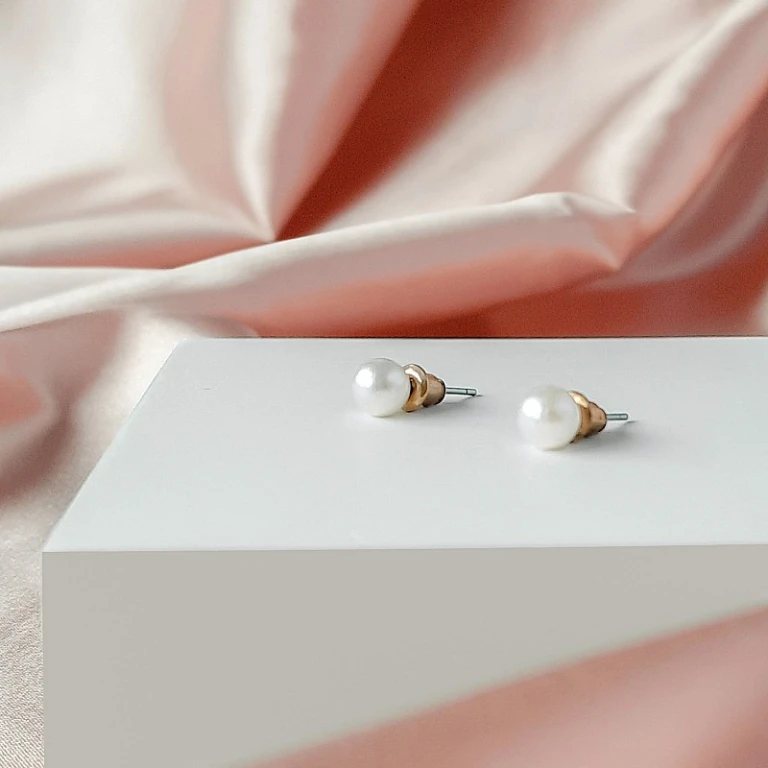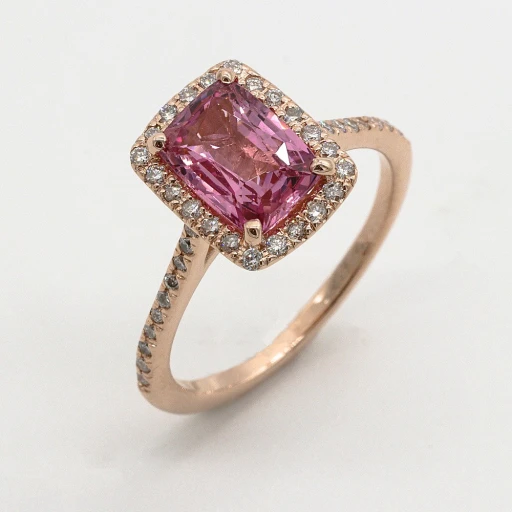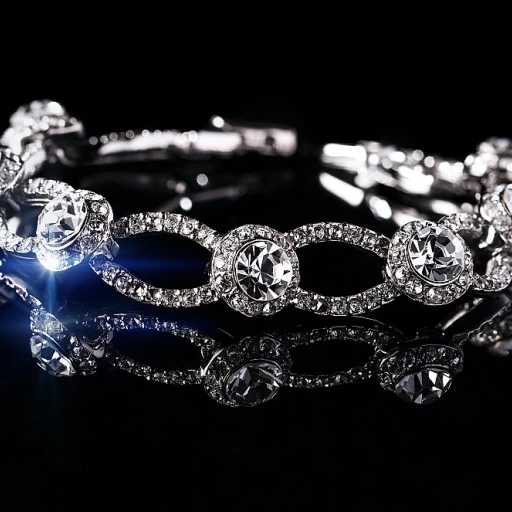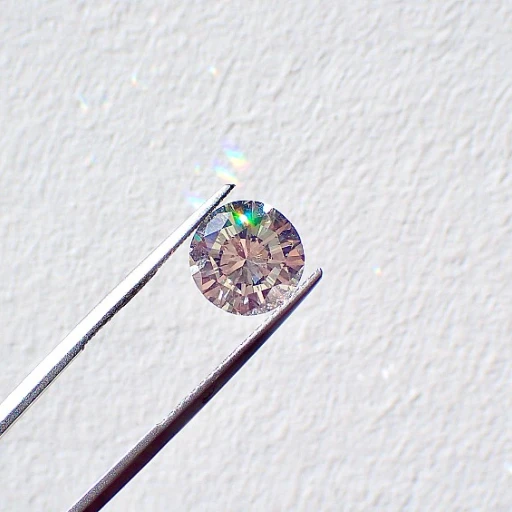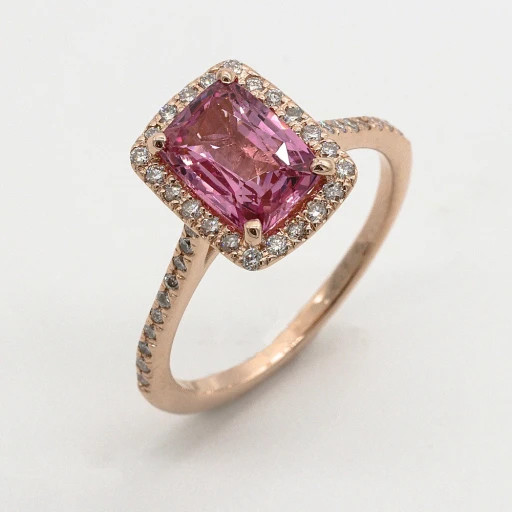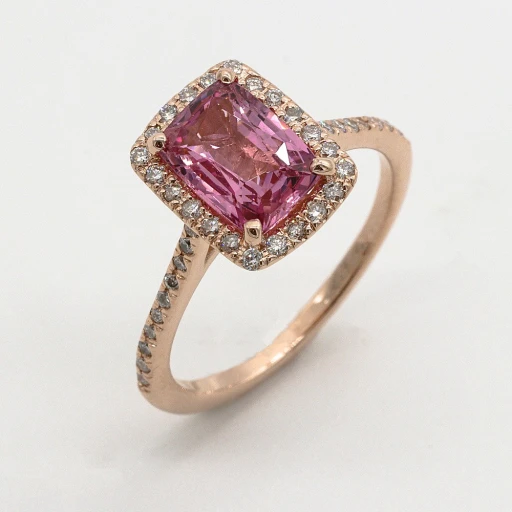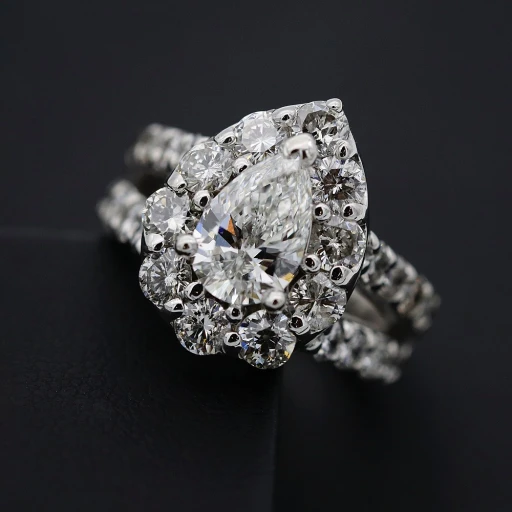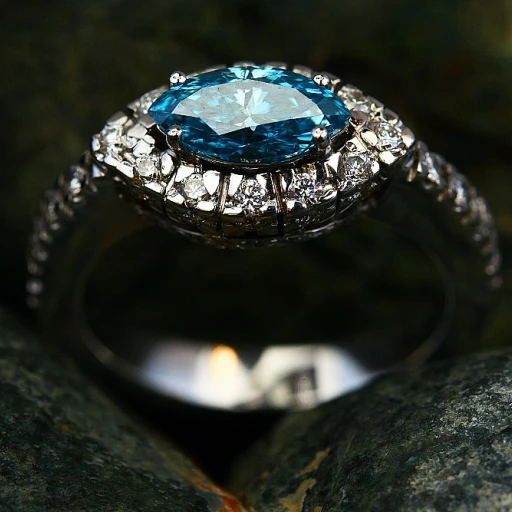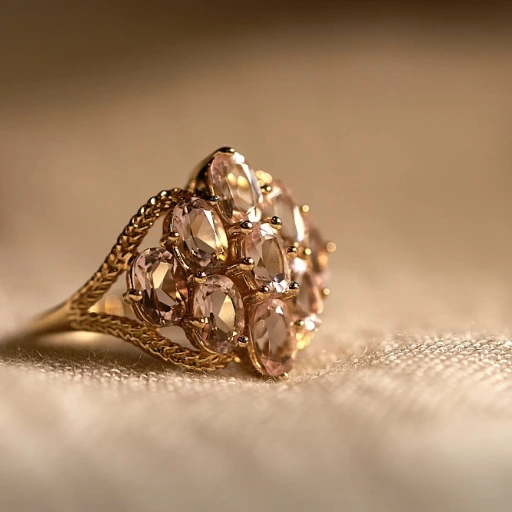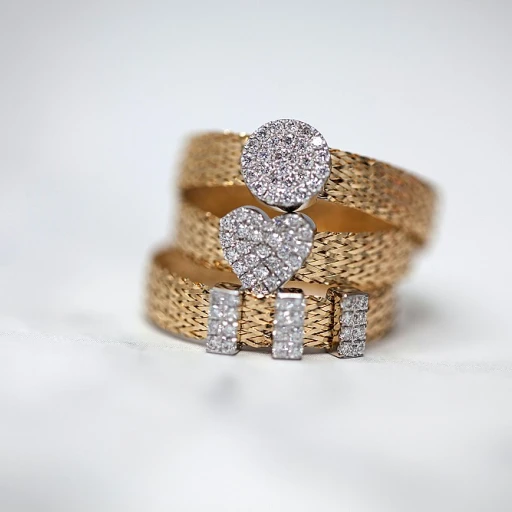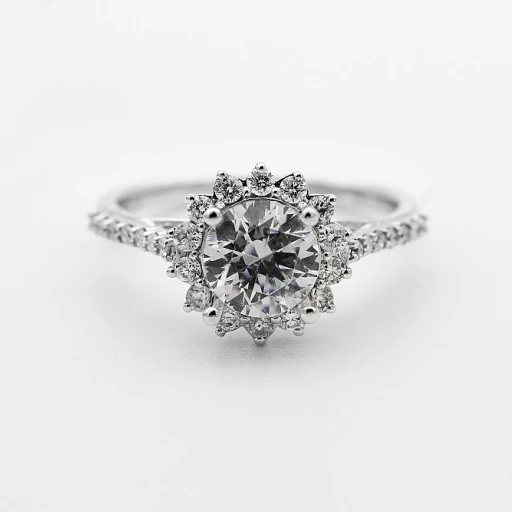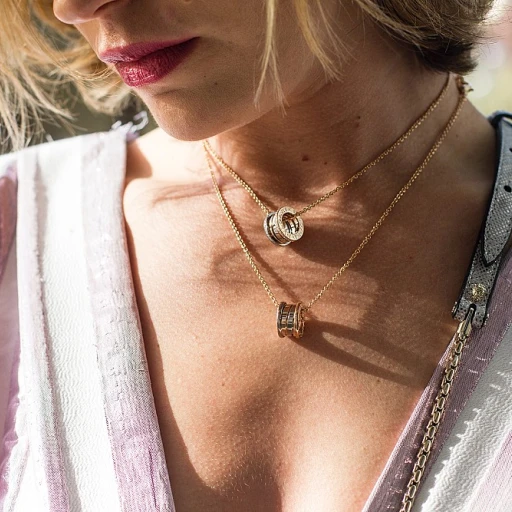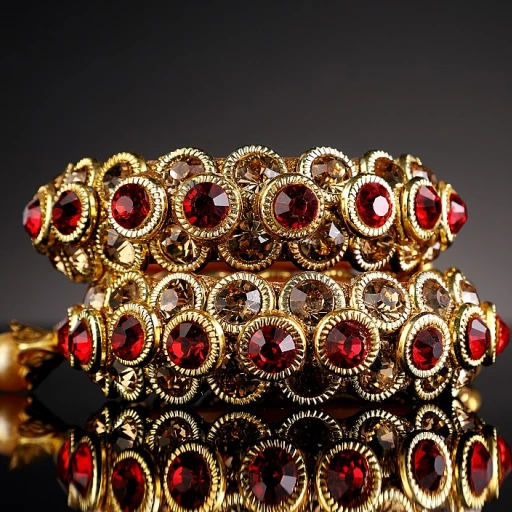
Understanding the East-West Setting
The Captivating Distinction of the East-West Setting
When stepping into the world of engagement rings, one setting that piques interest is the East-West configuration. Unlike the traditional vertical alignment in rings, this unique setting turns stones horizontally on the band, instantly distinguishing itself from the norm of solitaire or three-stone rings.
In an East-West setting, diamonds or gemstones are set parallel to the band’s axis. This approach can create a sleek line and modern appeal, seamlessly adapting to varying styles, from the minimalist elegance of an oval or emerald cut diamond to the bold, expansive allure of larger stones. Whether opting for white gold, platinum, or traditional gold bands, this setting style enriches the engagement ring’s design.
The change in orientation alters the entire “face” of the piece, drawing attention by allowing light to refract differently through the diamond's cuts. This configuration is typically opted for in settings like bezel or minimalist prongs, which are gentle on stones and hold them securely in a lush embrace. From an engagement to a wedding band, East-West settings create a modern twist on classic elegance, enhancing any diamond ring or wedding band with a contemporary touch.
Historical Context and Evolution
The Evolution and Historical Roots
The captivating east-west engagement ring is more than a modern trend; it's a design that has evolved over centuries. Traditionally, engagement rings have favored the vertical or "north-south" setting, where gems align with the length of the finger. In striking contrast, the east-west setting reimagines this convention by placing the gemstone horizontally, introducing a fresh perspective to traditional aesthetics.
Historical preferences leaned toward symmetry, with diamonds and gemstones primarily cut in shapes suitable for the vertical alignment. However, as jewelry design progressed, so did the creativity in orientation. The east-west style gained traction, especially due to its ability to highlight unique cuts such as the oval and emerald, offering a broader canvas for light to play across its surfaces.
Incorporating this design into engagement rings was not just a matter of setting a gemstone differently; it marked a shift in how people viewed the symbolism of engagement. It became a statement of individuality, deviating from "regular" styles without compromising elegance. This transition in design sensibility mirrors the broadening horizon of what constitutes timeless beauty, as seen in the adoption of bezel settings and diverse band styles.
From a historical standpoint, the east-west engagement ring reflects a growing appreciation for personalized ornamentation and the courage to embrace what stands out. This setting not only resonates with modern tastes but also pays homage to the rich tapestry of jewelry's design legacy.
For those captivated by jewelry's intricate past and evolving future, the allure of the three-stone birthstone rings further exemplifies how historical influences continue to define contemporary choices in personal adornments.
Design Versatility and Personalization
Versatile Design and Personalized Touch
When exploring the design aspect of East-West engagement rings, one is immediately struck by the flexibility they offer in terms of aesthetic appeal. Known for turning tradition on its side, East-West settings capitalize on the unique orientation of the diamond or gemstone, such as an oval or an emerald cut, which can be set horizontally rather than the regular vertical alignment. This not only creates a modern look but also allows for greater creative freedom in personalization. The strength of the East-West engagement ring lies in its ability to adapt to various design styles. From minimalist solitaire settings emphasizing the diamond's unique cut to more elaborate bezel designs that use white gold or other precious metals, these rings offer myriad possibilities for customization. Whether the preference leans towards a sleek white band or a more intricate gold design, there's an option to suit every taste. Furthermore, an East-West engagement ring can be an excellent choice for those looking to make a special statement. With each piece offering distinct character, these rings can easily blend classic elegance with contemporary flair, making them a favorite for those who appreciate versatility and individuality. This adaptability often influences the ring price, as the design's complexity and material choice will determine the price request and can be adjusted from the regular price to a special price sale when customization is involved. As a symbol of commitment, these uniquely oriented engagement rings not only draw attention but also provide the perfect canvas for expressing personal style. For those interested in exploring more about distinctive pieces, consider Embracing Elegance with exceptional styles that echo the elegance of an East-West setting.Advantages of Choosing an East-West Engagement Ring
Advantages of East-West Engagement Rings
Choosing an East-West engagement ring comes with a multitude of benefits that set it apart from the traditional North-South setting. One of the most distinctive features of these rings is their unique visual appeal. The East-West orientation of the diamond or gemstone provides a modern twist to the classic engagement ring design, making it an ideal choice for those looking to blend tradition with contemporary flair.- Distinctive Design: The unconventional setting of an East-West engagement ring allows for more creativity in design. Whether you opt for a diamond solitaire, an oval cut, or an emerald cut, the East-West setting accentuates the stone's unique shape and brilliance, offering a fresh perspective that appeals to individual expression.
- Enhanced Size Appearance: The horizontal orientation of the stone can make it appear larger than its usual dimensions. This optical illusion is a bonus for those who want to maximize the presence of their diamond without significantly affecting the ring price.
- Design Flexibility: From bezel to prong settings, this style accommodates various cuts and styles, including oval, emerald, and regular cuts, providing greater options for personalization. You can incorporate bands of gold or white gold to complement the east-west design, further enhancing its allure.
- Adaptability: Rings with this orientation are incredibly versatile and complement wedding bands seamlessly, providing a cohesive and elegant look for your special day.
- Cost-Effectiveness: While East-West engagement rings can be customized to fit a wide range of budgets, their unique setting often provides more design impact for the price unit, potentially making them a more cost-effective option compared to traditional settings.
Considerations for Buyers
Considerations Before Saying Yes to an East-West Engagement Ring
Choosing an east-west engagement ring is quite an exciting journey. While the unique design offers a modern twist on traditional settings, there are several factors to keep in mind to ensure you make the best decision.- Design Preferences: The east-west setting places gemstones horizontally, setting them apart from regular vertical arrangements. Whether you want an oval diamond or an emerald cut, knowing your or your partner’s preference can greatly impact the satisfaction level with the final ring.
- Metal Choices: Consider whether you prefer white gold or another type of metal. The choice of metal not only affects the look and durability but also the overall price of the east-west engagement ring.
- Band Styles: From solitaire rings to more elaborate design bands, there are many available. The choice can be influenced by lifestyle; someone with an active lifestyle might prefer a bezel setting for increased security of the stone.
- Budget and Pricing: Set a realistic budget. The unit price may vary significantly depending on the cut diamond, design, and setting. Checking whether the bands are available at a sale price can also offer economic benefits. Always compare the regular price with the asking sale price to ensure you're getting a good deal.
- Matching Wedding Bands: Consider how easily the chosen engagement ring will pair with wedding bands. The east-west engagement might limit some of the matching options, so it's important to explore different styles and ensure harmony in the overall bridal set.
Caring for Your East-West Engagement Ring
Preserving the Luster of Your East-West Engagement Ring
Caring for your east-west engagement ring involves more than just admiring its beauty. Ensuring the durability and appeal of this unique piece requires attention to detailed cleaning practices, mindful storage, and regular maintenance. Here's how to keep your piece splendorous:- Regular Cleaning: Dust and daily wear can dull the sparkle of your diamond ring. Gently clean your engagement ring with a soft toothbrush and a non-abrasive solution of mild soap and warm water. This process helps maintain the brilliance of the stone and the shimmer of the setting, whether it's gold or white gold.
- Proper Storage: When not wearing your engagement ring, store it separately from other jewelry to prevent scratches. This unit price on a secure place ensures that the intricate east-west setting remains unscathed.
- Periodic Professional Inspection: Engage a reputable jeweler for regular check-ups to evaluate the integrity of the setting, particularly if you have a bezel or solitaire design. Such professional insight can also help retain your ring's value, especially if you're considering a future price request.
- Avoiding Harsh Chemicals: Minimize exposure to harsh chemicals, as they can damage both the metal bands and some cuts of diamonds, whether oval or emerald cut.
